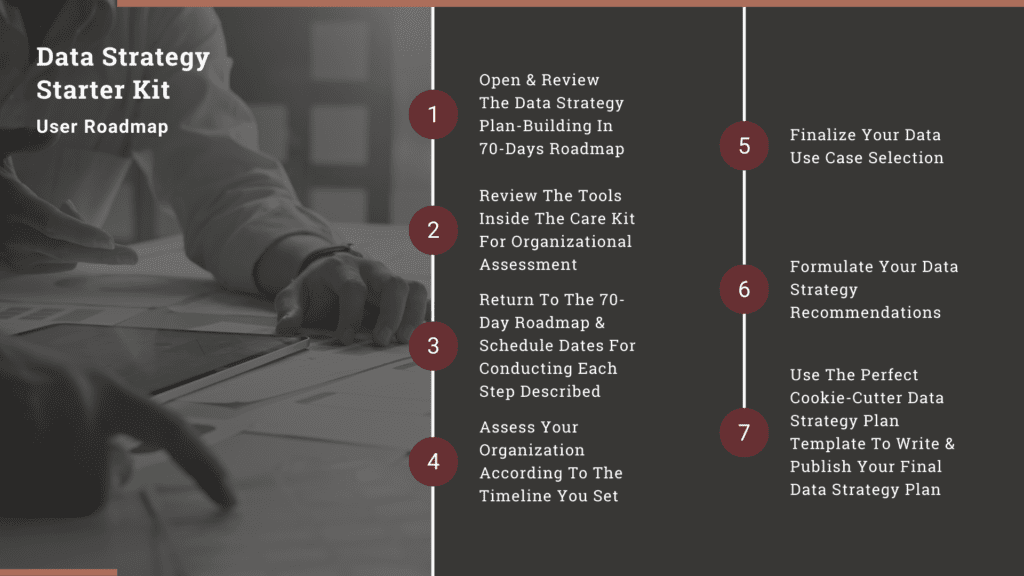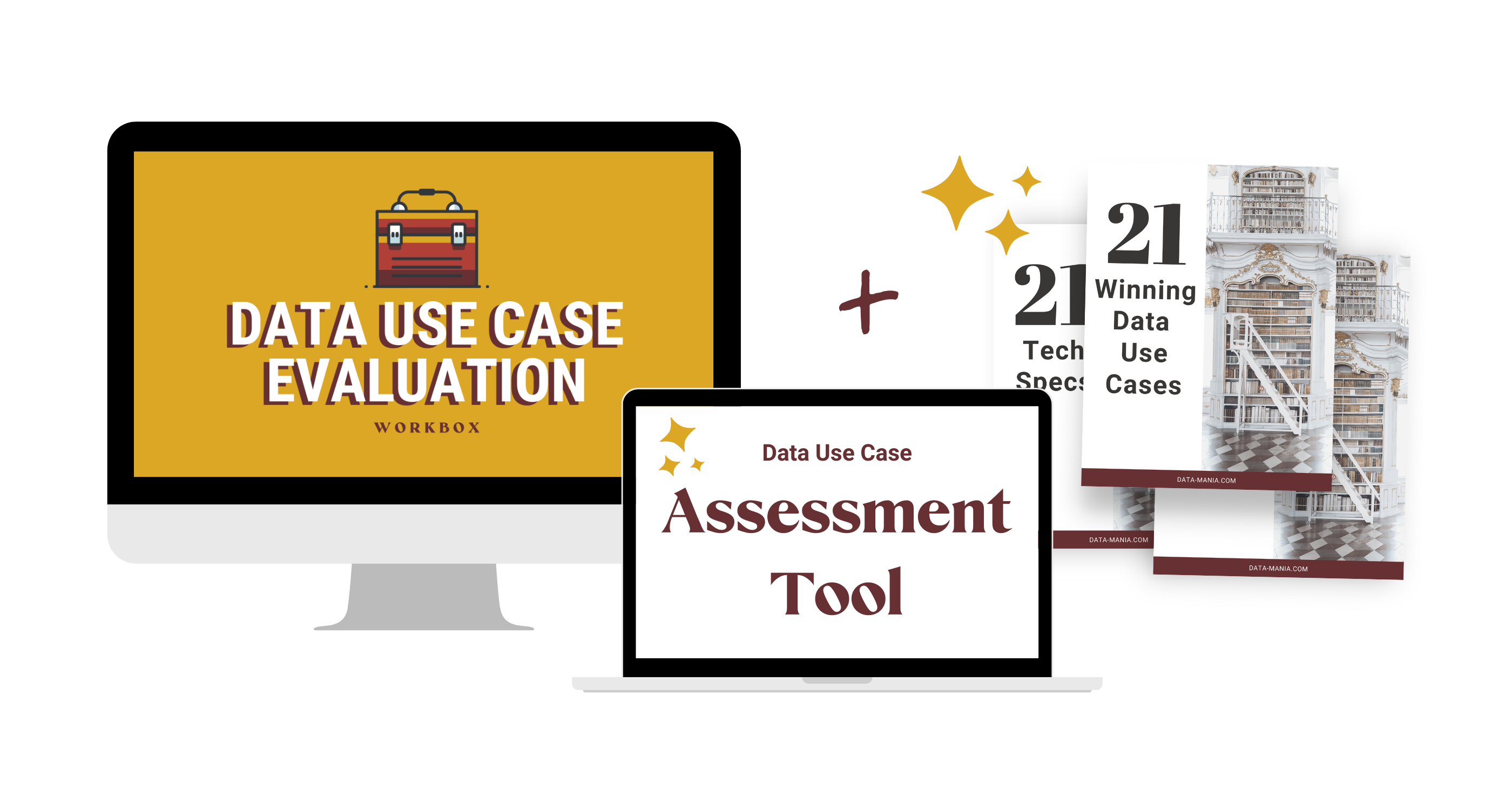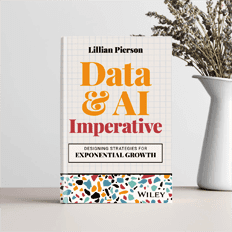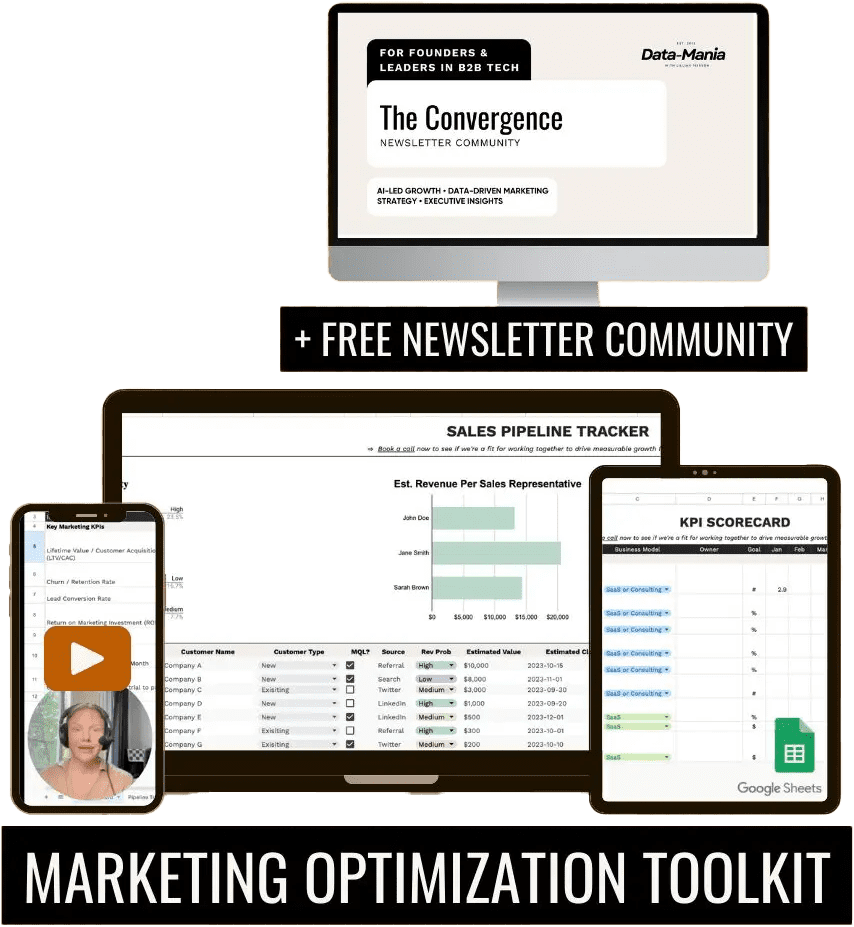Welcome To Data Strategy Starter Kit
Below you will find a general road map you can follow to work through the assets in this Data Strategy Starter Kit.

Care Kit For Organizational Assessment
Data Strategy Beacon Bundle
Lorem ipsum dolor sit amet, consectetur adipiscing elit. Ut elit tellus, luctus nec ullamcorper mattis, pulvinar dapibus leo.
Important Note:
This portion of the data strategy plan-building process assumes that you’ve reviewed relevant data case studies and use cases. If you’ve not yet done that, then we recommend you stop what you’re doing and start surveying the industry for data use cases that are most relevant and promising given your company’s current state.
If you prefer that we do the research for you, we recommend that you purchase the Data Use Case Evaluation Workbox. This is a tool & resource bundle that dramatically shortcuts the path to selecting the optimal data use case around which to build your winning data strategy. It includes our proprietary data use case selection tool, as well as tech specs, a use case, and a case study for each of the 21 most profit-forming data projects ever. These collections span 13 industries and represent all 5 routes to using data to improve a business’s bottom-line (incl. improvements to operations, marketing, decision-support, finance, and data monetization).
CLICK HERE TO GET ACCESS TO OUR DATA USE CASE EVALUATION WORKBOX
If you prefer to build your own data use case framework, and stock it with data use cases you find via your own web research, feel free to borrow our 3 step process for doing that. We will paste that in the blurb below.
Copied from: DATA SCIENCE PROCESS LIFECYCLE: 8 STEPS TO IMPROVING YOURS BY DEVELOPING A BUSINESS-CENTRIC DATA USE CASE FRAMEWORK
Data Use Case Frameworks – And Why You Need One
If you agree with me that having a data strategy is a great way to boost the ROI of your data team, you’ll be wanting to get pen to paper, or fingers to iPad, and create yourself a strong data use case framework.
A data use case framework is a way of identifying specific data use categories from your fresh-off-the-press data strategy and using these categories to define your key data projects for the upcoming year.
As you’ll see below, there are three key steps to identifying and establishing your data use case framework. These steps will leave you with three to four key data use cases, that might look a little something like this:
- Optimizing the experience of existing customers through personalization
- Addressing low employee engagement
- Optimizing pricing
- Reducing administration costs
Coming up with a strong data use case framework is the logical first step after getting relevant stakeholders around a table to discuss data strategy.
3 Steps to Developing an Effective Business-centric Data Use Case Framework
Many companies fail to produce any ROI on their data operations. If you’re in the same boat, take some comfort from the fact that you are definitely not alone!
But this is not the way things need to be. There are plenty of gains to be made from within your data science team. You just need to help define some data use case functions, help the team see their place in the overall organizational vision, and voila – say hello to a far more efficient, far more focused, infinitely more successful data/company relationship.
I have implemented the following three-step process for multinational corporations around the world. I know that it works. And I want to help you put the very same strategy in place for your business.
Here are the 3 steps:
1) First things first, you’ll need to create an index of the major data use cases that are relevant to your business and sector. These data use cases should generally fall under the ‘big data’ category – anything from data science to AI, IoT, data analytics and engineering.
Come up with as many as you can – let’s say around 10 to 15. If you’re more on the implementation side of things, you may need to do a little research about what type of data use cases are important in your sector. That’s totally normal. Don’t spend too long on the research, or you’ll get bogged down in the details.
If you’re coming from a leadership perspective, a great idea is to consult with your implementation people. Not only does this create goodwill, it also gives you an invaluable insight into their work and will give you inspiration for drawing up your data use case framework.
2) Now it’s time to identify the functions of each data use case you have defined. Go through your list and for each one ask yourself: “How does this use case function to improve the business’s bottom line?”
By breaking each one down into really broad categories, you will create a container system you can use for easy reference when wanting to access them down the line.
3) Here’s the final sweep. Go back through and group your use cases according to the 3 to 4 functions you identified in step two. There’s always going to be a fuzzy line between the business objectives that these use cases fulfill. Don’t worry about that. Decide what functions are most logical for your company and use those that are most important to your unique business needs.
Once you’ve completed these three steps, you’re ready to finish building your data use case library and start working on building a data strategy.




